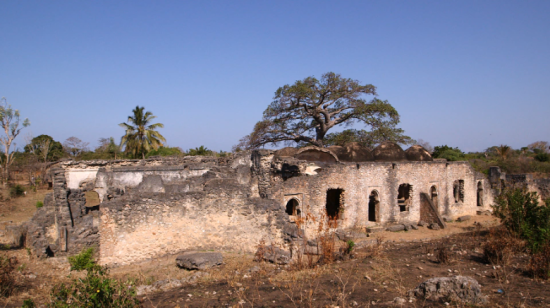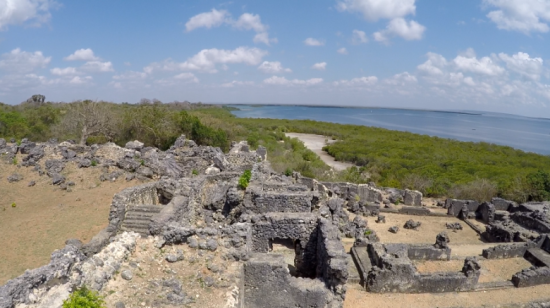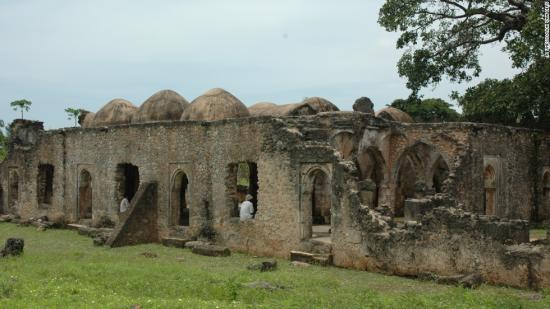Pete Kowalczyk
Source - http://edition.cnn.com/2015/10/19/africa/kilwa-rhapta-felix-chami/index.html
On the Tanzanian coast, 330 km south of capital Dar es Salaam, there's a stillness out on the water that belies the frenetic trade that flowed through this spot hundreds of years ago.
The harbor at the island of Kilwa was for hundreds of years one of the wealthiest areas of Africa. Since ancient times, this trading post connected the continent to the rest of the world.
Today, the site's historic importance has captured the imagination of established archaeologists like Felix Chami, professor of archaeology at the University of Dar es Salaam, who could be on the cusp of one of Africa's greatest discoveries.
"I feel that these architectural remains are from the greatest of the African civilizations," says Chami, standing near the ancient ruins of Kilwa.
"When you cross the beaches and the channel to Kilwa Kisiwani you see millions of pieces of pottery. Then when you get to the island itself, you actually see the wonders of civilization."
The civilization that Chami refers to is an ancient east African trading society tucked along the Tanzanian coastline known to Arab sailors up until the 10th century as Azania, meaning "land of the blacks." The power and wealth of Azania was based at Rhaphta -- an as yet undiscovered traded city that amassed great wealth exporting tortoiseshell and coconut oil and importing metal weapons and iron tools.
Chami is now on a mission to find the mystical city of Rhapta -- one of the wealthiest cities in the history of sub-Saharan Africa.
But whereas Rhapta's mysteries remains hidden under Tanzanian soil, the site at Kilwa gives us a window into this east African lost civilization.
The next frontier of African archaeology
 The Great Mosque of Kilwa Kisiwani is the oldest standing mosque on the East African coast
The Great Mosque of Kilwa Kisiwani is the oldest standing mosque on the East African coast
As you get the boat across the channel to Kilwa Kisiwani island, the oldest standing mosque on the East African coast comes into view. The ruins of the Great Mosque are a UNESCO World Heritage Site. Surrounded by palm trees and vegetation, it feels like a truly lost world.
"When the Portuguese first arrived they said the development of architecture here was equal to that found in the Mediterranean world," says Chami. "But the Africanness of the mosque and buildings at Kilwa Kiliwani can be identified by the the local material the local technologies used."
Built from the coral stones and limestone pulled up from the deep ocean, the ruins almost seem to rise out of the sea. Stones are packed tightly together and supported by wood from mango trees. Sunlight breaks through ruinous alcoves revealing the earthy orange hues of the stone giving the site an unmistakably African feel.
The site once accumulated vast wealth by trading gold from southern Africa. Today, it only hints at its decadent past.
"These guys managed to make the biggest monuments we've known in the history of east Africa. The sultans and kings that were controlling these towns were the first people to actually create money here," says Chami.
"It is special because it was the first great trading town in this part of the world."
 Ruins of the palace of Husuni Kubwa
Ruins of the palace of Husuni Kubwa
Rewriting the history of Swahili culture
The Swahili society of east Africa with its unique religion, geometric design, language and foods is one of the world's cultural gems.
For centuries Swahili culture was considered to be a direct product of the Middle Eastern, Indian, Persian and Portuguese people that settled on the coast and set up trading towns.
Now through his work along the east African coast, Chami is rewriting the history of Swahili culture -- and showing that it played its own role in the ancient world.
"One important discovery for me was to show that Swahili culture evolved from the culture of the stone age and early iron age all the way up to modern times. This means that the Swahili culture we recognize today was not made by foreigners coming here -- it was actually made by Africans themselves."
Chami did this by discovering traded goods that predate the arrival of Arabic or Portuguese settlers.
"I've discovered many, many archaeological sites from the early iron age and the period of the Roman empire. In the excavation of these sites I've found traded goods, I've found beads and pottery from the Roman world."
 Sub-Saharan Africa's first metropolis
Sub-Saharan Africa's first metropolis
One missing piece in the puzzle of this lost east African civilization is the mystical capital city of Rhapta.
Greek geographer Ptolemy described a settlement in East Africa as a "metropolis" around 100 AD. Chami is now on a mission to unearth this mega city that once lay at the heart of a great civilization.
"From the 1990s I started research in discovering this metropolis -- the town of Rhapta," he explains. "Rhapta is unique because it's the earliest metropolis known in the sub-Saharan world. And I think I've discovered the region where the city is located."
Somewhere buried under Tanzania's Rufiji delta, on the east coast south of capital Dar es Salaam, may lay the remains of the wealthiest city in east Africa's history. Chami's work has only just begun and he may be on the cusp of his greatest discovery to date.
"I haven't yet found the actual remains of the buildings, or other goods material that would suggest the discovery of the town itself," says Chami.
"So far I've only been using trenches of two meters," he says. "Just imagine the huge archaeological sites in Mesopotamia and Egypt. They've been excavated with large trenches, large teams of scholars coming together, volumes of books have been produced on their discoveries."
"Nothing like that has been done here on the east coast of Africa. There is so much to be discovered and there is so much to write about."
A gift for future generations
The goods, gold and wealth that flowed so opulently through the grand palaces and mosques of East Africa's great civilization mostly remain a mystery buried under the ground.
But the discoveries that have been made so far have created a cultural wealth that can add value to the lives of future generations.
"I was born here, this is my home. Everything here feels as if it belongs to me and belongs to my culture," says Yusuf Bakari Said, the antiquity guide of Kilwa Kisiwani, who works at the Great Mosque everyday. "I'd like to continue to be a part of developing the site for myself, and for the future of my family."
For Yousef, the site is more than just a job -- it gives him a sense of identity. It's a sentiment that also drives Chami's archaeological mission.
"I am one of the scholars who believe that a person who doesn't have a sense of history cannot think properly," says Chami. "If you don't have history, you can do nothing. Sincerely, you remain poor."
As Chami talks, two young kids sit facing a ruinous wall of the great mosque. Coming here to worship and recite Quranic passages, the next generation still seem drawn to the power and allure of this ancient site.
Chami sees that there's a deep importance to the site -- a social imperative to his work that goes beyond architecture.
"If we are aware of our history, we can make more discoveries. If we're proud of where we come from, we can be proud of who we are."
VIDEO =Piercing together the fragments of Tanzania's history 05:37
http://edition.cnn.com/2015/10/19/africa/kilwa-rhapta-felix-chami/index.htm